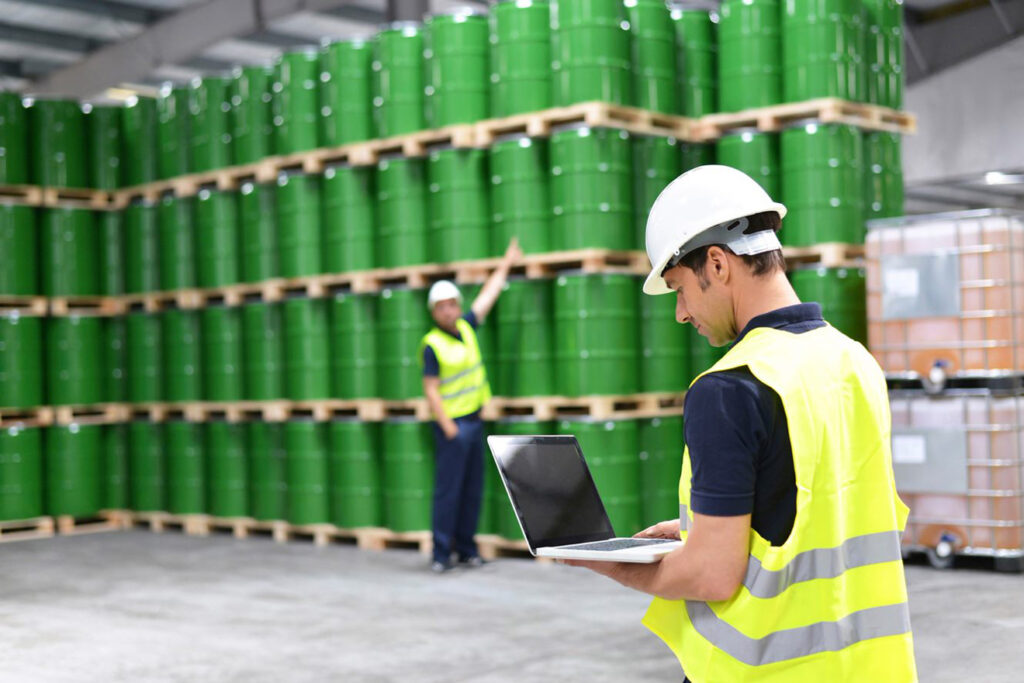Chemical exposure monitoring has become a critical component for industries that deal with hazardous substances daily. Ensuring worker safety and maintaining regulatory compliance requires robust healthcare EHS compliance tools and systems. As awareness grows about the health risks associated with chemical exposure, various sectors have adopted advanced chemical exposure monitoring techniques to safeguard their workforce and the environment. This article explores the top industries where chemical exposure monitoring and healthcare EHS compliance tools play an indispensable role.
Chemical Exposure Monitoring in the Healthcare Industry
The healthcare sector, despite being focused on healing, is not exempt from chemical risks. From sterilization agents and disinfectants to anesthetic gases and laboratory chemicals, healthcare workers face continuous exposure to potentially harmful substances. Healthcare EHS compliance tools are crucial in hospitals, clinics, and laboratories to monitor the levels of these chemicals and ensure they do not surpass safe limits. Continuous chemical exposure monitoring protects staff and patients alike, helping facilities adhere to strict occupational safety standards and prevent long-term health issues related to chemical exposure.
Moreover, healthcare facilities are highly regulated environments where compliance with OSHA and other safety regulations is mandatory. Chemical exposure monitoring systems integrated with healthcare EHS compliance tools allow these facilities to track exposure in real time, generate reports, and implement timely interventions. This reduces the risk of chronic diseases and acute injuries linked to chemical exposure, making the healthcare industry a key adopter of such monitoring systems.
Chemical Exposure Monitoring in the Manufacturing Industry
Manufacturing industries, especially those involving chemicals, metals, plastics, and pharmaceuticals, are among the largest users of chemical exposure monitoring systems. Workers in these industries handle a variety of substances that can pose inhalation or skin absorption hazards. The implementation of healthcare EHS compliance tools is vital to measure, manage, and mitigate these risks.
Chemical exposure monitoring in manufacturing helps companies comply with regulations such as OSHA’s Hazard Communication Standard and the Globally Harmonized System (GHS) for classification and labeling of chemicals. By tracking chemical exposure levels, manufacturers can adjust ventilation systems, update safety protocols, and provide adequate personal protective equipment (PPE) to employees. This proactive approach minimizes workplace incidents and protects workers from long-term health complications associated with toxic chemical exposure.
Chemical Exposure Monitoring in the Oil and Gas Industry
The oil and gas sector involves extensive use of volatile and hazardous chemicals, including drilling fluids, solvents, and gases. Employees working in exploration, drilling, refining, and transportation face constant risks of chemical exposure. Here, chemical exposure monitoring systems are essential components of occupational safety programs.
Healthcare EHS compliance tools within the oil and gas industry help monitor airborne concentrations of hazardous chemicals to ensure worker safety. These tools enable companies to detect leaks, spills, or dangerous exposures early, allowing for rapid response and containment. Given the potentially explosive and toxic nature of many chemicals in this sector, constant monitoring is not just a regulatory requirement but a life-saving necessity.

Chemical Exposure Monitoring in Agriculture and Pesticide Application
Agriculture workers frequently handle pesticides, herbicides, and fertilizers, all of which contain chemicals that can be harmful if not properly managed. Chemical exposure monitoring systems help track exposure levels in the field, especially in enclosed spaces such as greenhouses or storage facilities.
Healthcare EHS compliance tools assist agricultural businesses in adhering to safety guidelines issued by organizations like the EPA and OSHA. Monitoring chemical exposure ensures that workers do not suffer from acute poisoning or chronic illnesses caused by pesticide exposure. Moreover, these tools facilitate training and awareness programs, enabling safer chemical handling practices in the agricultural sector.
Chemical Exposure Monitoring in the Chemical Manufacturing Industry
The chemical manufacturing industry itself is an obvious candidate for extensive chemical exposure monitoring. Plants producing raw chemicals or chemical-based products must manage the risks associated with toxic and corrosive substances.
Healthcare EHS compliance tools enable continuous monitoring of airborne contaminants, chemical spills, and leaks. This monitoring ensures that exposure limits set by regulatory bodies are not exceeded and that workers remain protected at all times. Chemical exposure monitoring in this industry also supports emergency response preparedness, helping contain incidents swiftly to avoid widespread harm.
Chemical Exposure Monitoring in the Pharmaceutical Industry
Pharmaceutical production involves numerous chemical processes where employees may be exposed to solvents, active pharmaceutical ingredients (APIs), and other hazardous materials. Ensuring a safe working environment requires precise chemical exposure monitoring integrated with healthcare EHS compliance tools.
These systems monitor chemical levels in production areas and laboratories, ensuring compliance with stringent health and safety regulations. By maintaining tight control over exposure, pharmaceutical companies protect their workers and prevent contamination of products, thereby safeguarding public health and enhancing operational efficiency.
Chemical Exposure Monitoring in the Construction Industry
The construction industry uses many chemicals such as solvents, adhesives, paints, and asbestos-containing materials. Workers are often exposed to hazardous dust, fumes, and vapors on job sites, making chemical exposure monitoring a critical safety measure.
Healthcare EHS compliance tools assist construction companies in identifying exposure hotspots and implementing control measures such as improved ventilation or protective gear. Monitoring systems also help companies comply with OSHA’s construction safety standards, reducing health risks and avoiding costly penalties.
The Importance of Integrating Chemical Exposure Monitoring with Healthcare EHS Compliance Tools
Across all these industries, chemical exposure monitoring alone is not sufficient. Integrating these systems with healthcare EHS compliance tools offers a comprehensive approach to occupational health and safety. These integrated systems provide real-time data, automated reporting, and actionable insights that enable companies to maintain continuous compliance with regulations and improve worker health outcomes.
Healthcare EHS compliance tools support not only monitoring but also training, risk assessment, and incident management. When chemical exposure monitoring data is combined with compliance software, organizations can identify trends, conduct root cause analysis, and develop better safety policies.
Conclusion
Chemical exposure monitoring has become indispensable in industries where hazardous chemicals are part of everyday operations. The healthcare, manufacturing, oil and gas, agriculture, chemical manufacturing, pharmaceutical, and construction sectors heavily rely on these systems to protect their workforce. Coupled with healthcare EHS compliance tools, chemical exposure monitoring ensures that companies meet regulatory requirements and foster safer working environments. As awareness and technology advance, the integration of chemical exposure monitoring and healthcare EHS compliance tools will continue to be a cornerstone of occupational safety across industries.



